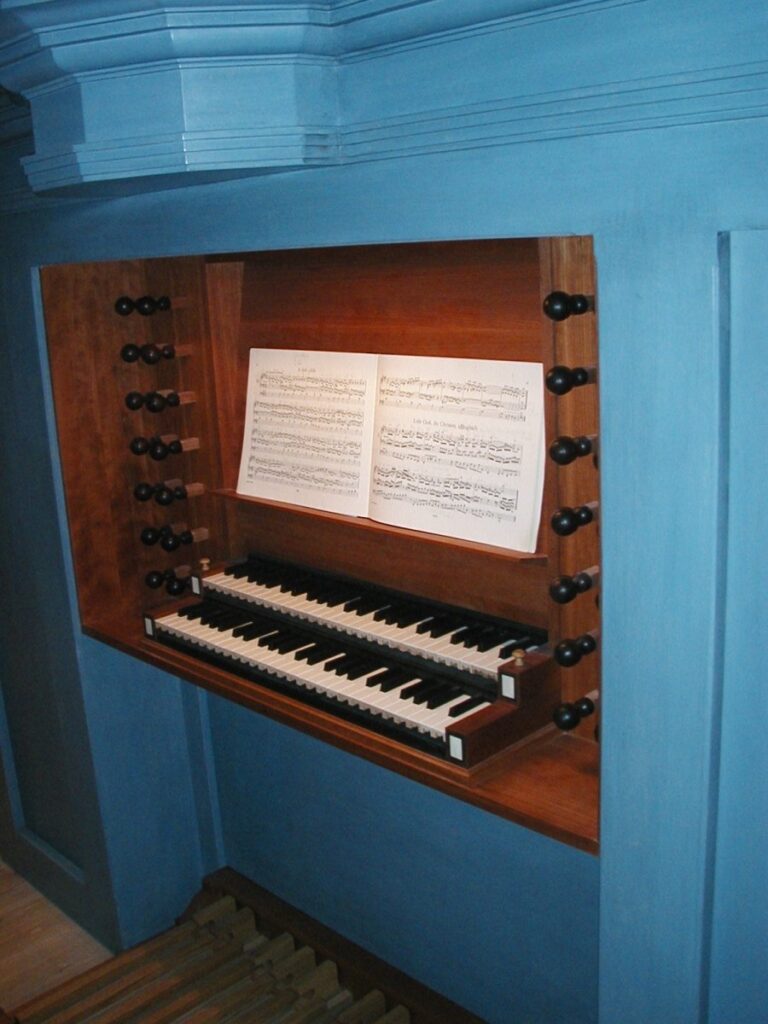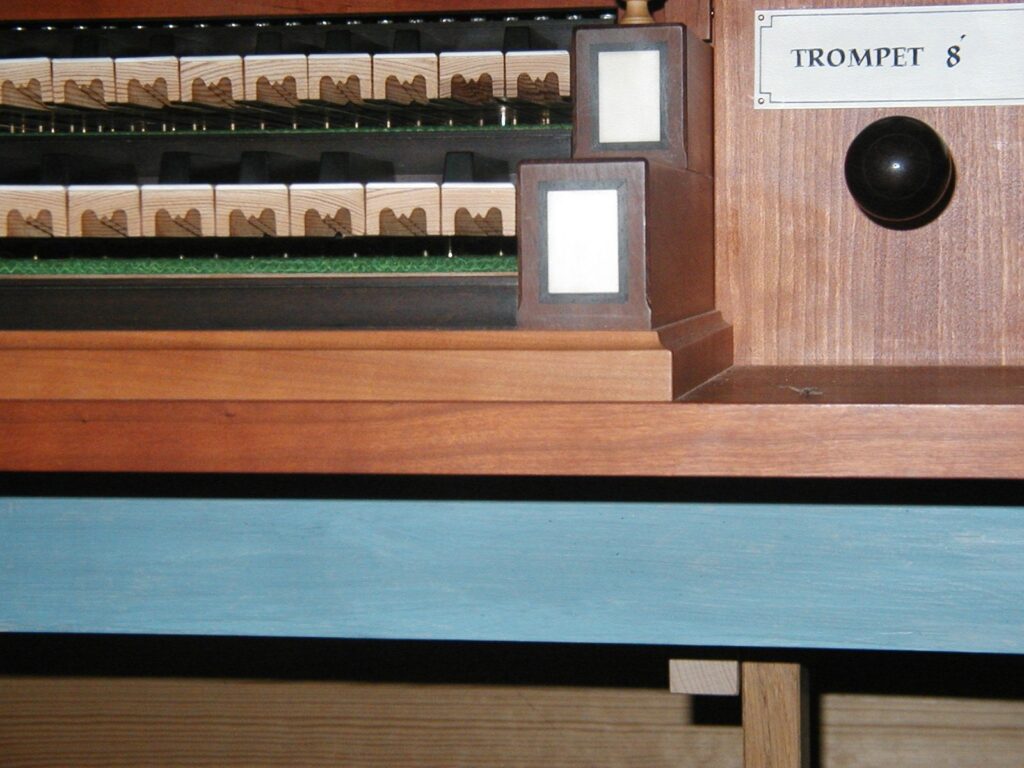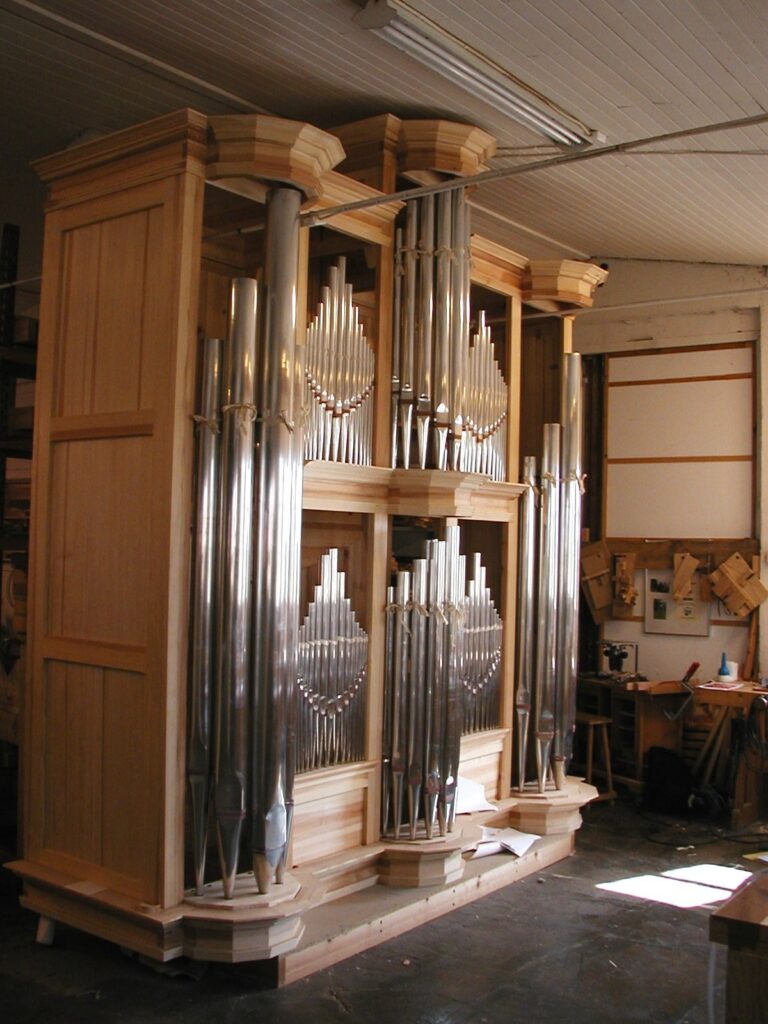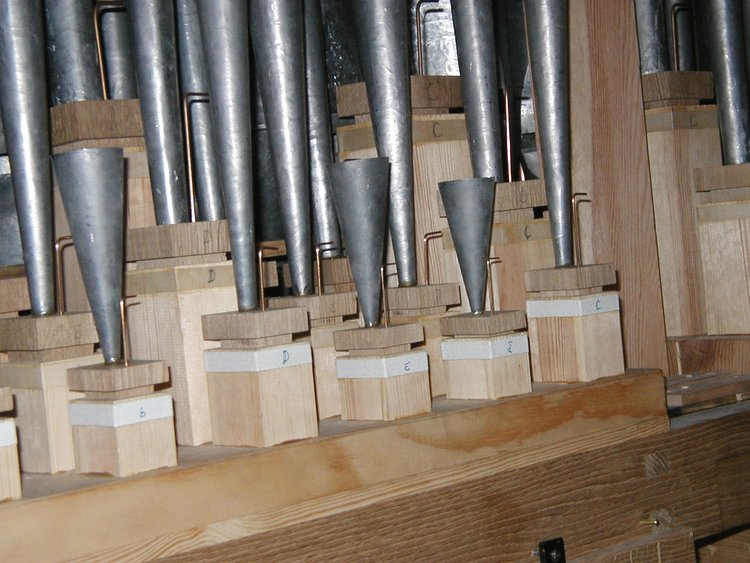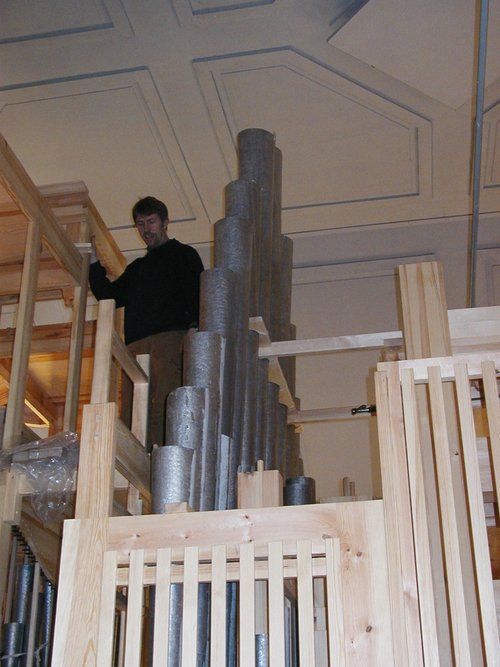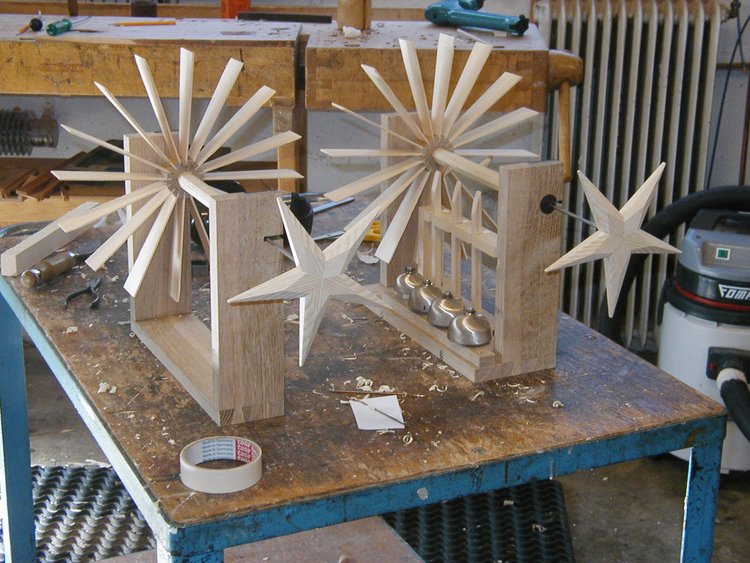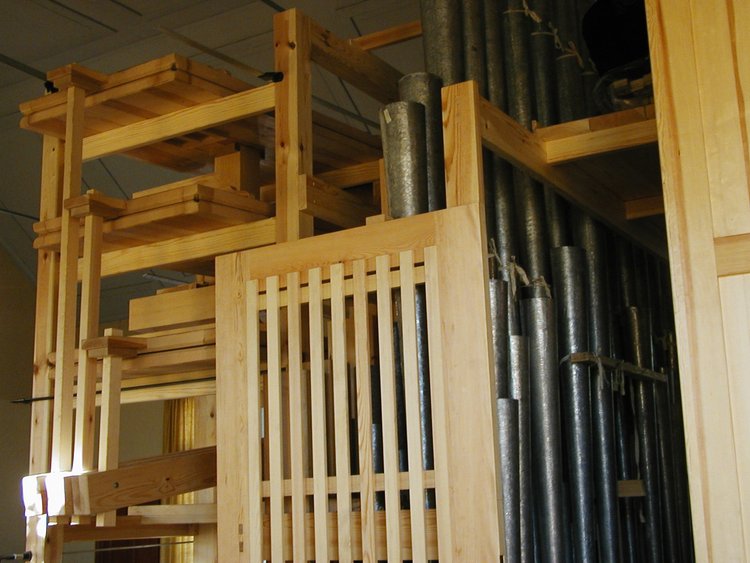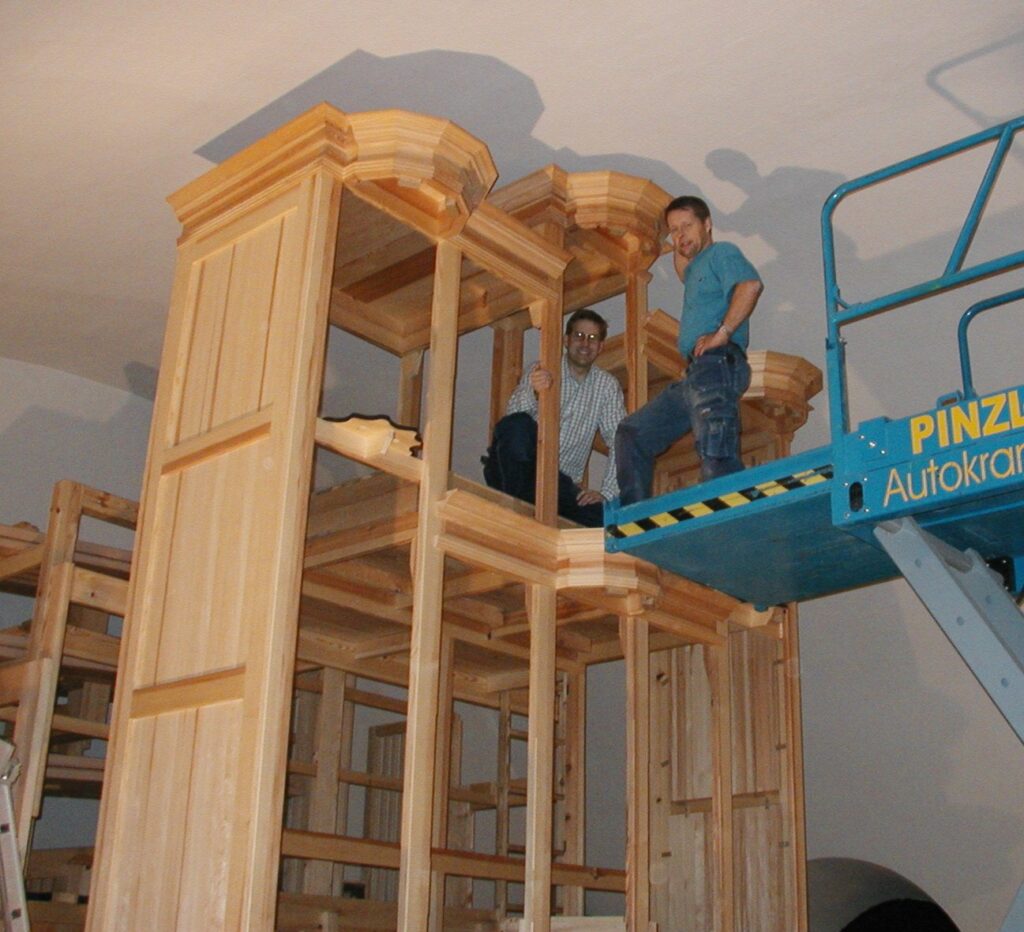Schärding Kurhaus church, 2004
Description
The organ is located in a monastery church belonging to the Order of the Brothers of Mercy. Adjacent to the church, the order runs a health center. The organist’s wish was to create a new instrument suitable for church services and the rich Austrian Baroque tradition. The organ is dedicated to Rupert Ignaz Mayr (1646-1712), born in Schärding and later active as a composer and organist in Munich.
Appearance and design
- The organ has 23 stops, divided into two manuals and pedal.
- The height of the façade is 5.2 m and includes pipes from the haubtwerks Principal 8′ and the oberwerks Principal 4′.
- The six pedal stops are located behind the organ case.
Action
- Suspended key action.
- Mechanical stop action.
- Range: manual C-d³, pedal C-d¹.
Pipework
- The façade pipes are made of hand-planed and polished tin.
- Other metal pipes are made of various high lead alloys and are hammered.
- The trombone is 4.5 m long and made of hammered lead.
Painting and details
- The organ is painted with a paint consisting of hot glue, chalk and pigment according to old tradition.
- The carvings are made in Austria and gilded with silver.
Wind system
- The wind system consists of three bellows mounted on a stand behind the organ.
- The high position of the bellows makes it possible to walk behind the organ.
- Air pressure is 75 mm on water column.
Tuning
- The tuning is a modified meantone with A = 415 Hz.
Disposition
Werk
Principal 8′
Hohlfloit 4′
Octav 4′
Spitzfloit 4′
Qvint 3′
Super Octav 2′
Cornet IV
Mixtur IV
Trumpet 8′
Oberwerk
Gedackt 8′
Quintaden 8′
Principal 4′
Rohrfloit 4′
Sesquialtera II
Gemshorn 2′
Scharff III
Dulcian 8′
Tremulant
Cimbelstern
Pedal
Subbass 16′
Octav 8′
Super Octav 4′
Trombone 16′
Trumpet 8′
Cornet 2′
Coupler
I / II
I / P
Audio sample
Unknown 1
Johannes Dandler
Unknown 2
Johannes Dandler
Unknown 3
Johannes Dandler
Unknown 4
Johannes Dandler
“It was for me a magnificent pleasure to play this instrument!”
Participants
| Name | Responsibility |
|---|---|
| Karl Nelson | Design, windchests, pipe making, intonation |
| Peter Alatalo | Organ case, wind system, keyboard |
| Christer Andersson | Pipe making |
| Håkan Lindberg | Action |
| Johan Sköld | Windchests, subass, Pedal keyboards |
| Johann Waldbauer | Gilding of carvings |
| Johan Gustavsson | Stop labels |
| Tomas Öjersson | Welding |
| Johannes Dandler | Concept and disposition |

